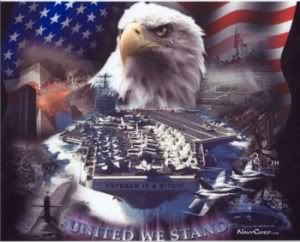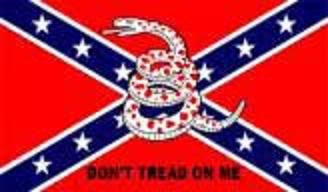In Pursuit of Pancho Villa 1916-1917 (Mexican Invasion Is Nothing New)
In Pursuit of Pancho Villa 1916-1917
Doroteo Arango, alias Francisco “Pancho” Villa, was born in 1877 (1879 according to some sources) in San Juan del Rio, State of Durango, Mexico. During his lifetime, he was a ruthless killer (killing his first man at age sixteen), a notorious bandit (including cattle rustling and bank robbery), a revolutionary (a general commanding a division in the resistance against the 1913-14 Victoriano Huerta dictatorship), and despite his bloodthirsty nature, an enduring hero to the poor people of Mexico. In their minds, Villa was afraid of no one, not the Mexican government or the gringos from the United States. He was their one true friend and avenger for decades of Yankee oppression.1
In late 1915 Pancho Villa had counted on American support to obtain the presidency of Mexico. Instead the U.S. Government recognized the new government of Venustiano Carranza. An irate Villa swore revenge against the United States.and began by murdering Americans in hopes of provoking President Woodrow Wilson’s intervention into Mexico. Villa believed that American interevention would discredit the Carranza government with the people of Mexico and reaffirm his own popularity.
Villa and his “pistoleros” launched raids along the U.S.- Mexico boundary to frighten the Americans living in Texas, New Mexico, and Arizona border towns. Concerned for the safety of Americans, President Wilson ordered the War Department to begin deploying troops to Texas and New Mexico. In April, 1915, Brigadier General John J. Pershing and his 8th Infantry Brigade were sent to Fort Bliss, Texas with the mission of guarding the U.S.- Mexico border from Arizona to a bleak outpost in the Sierra Blanca mountains ninety miles southeast of El Paso.
While the presence of American troops served to deter Villa on the north of the Rio Grande, the murder of U.S. citizens in Mexico continued. One of the most heinous atrocities occurred January 11, 1916, when Villa’s bandits stopped a train at Santa Ysabel (See Map 1). The bandits removed a group of 17 Texas business men (mining engineers) invited by the Mexican government to reopen the Cusihuiriachic mines below Chihuahua City and executed them in cold blood. However, one of those shot feined death and rolled down the side of the embankment and, crawling away into a patch of brown mesquite bushes, escaped. The train moved on, leaving the corpses at the mercy of the slayers, who stripped and mutilated them. After the escapee arrived back at Chihuahua City, a special train sped to Santa Ysabel to reclaim the bodies. When the people of El Paso heard of the massacre, they went wild with anger. El Paso was immediately placed under martial law to prevent irate Texans from crossing into Mexico at Juarez to wreak vengeance on innocent Mexicans.2
Despite outrage in the United States and Washington over the Santa Ysabel massacre, President Wilson refused to intervene and send troops into Mexico. Two months later, Villa decided to strike again. This time he would invade the United States. At 2:30 a.m., on the morning of March 9, 1916, he and 500 “Villistas” attacked the 13th U.S. Cavalry at Camp Furlong near Columbus, New Mexico (Map 1). Despite prior knowledge that Villa and his men were pillaging, raping, and murdering their way toward the border, the cavalry was caught completely by surprise. One reason for the cavalry’s sluggishness was because some of the troops had been drinking, but perhaps more importantly, all of the troops’ rifles were chained and locked in gun racks. Still, the cavalry managed to get organized and fought off the “Villistas” killing many of them in the process. During their retreat, however, the “Villistas” stopped at Columbus, New Mexico for a looting and window-shooting spree that left several U.S. civilians dead. For three hours, bullets struck houses and shouts of “Viva Villa! Viva Mexico! Muerte a los Americanos!” (death to americans) were heard in the streets. The town was set afire, though Villa’s men realized nothing beyond a few dollars and perhaps some merchandise from the burntout stores. The terror continued until about 7 a.m., and when Villa finally rode off, the smoke-filled streets of Columbus were littered with the dead and wounded. Fourteen American soldiers and ten civilians were killed in the raid.3
Although Villa’s losses from from his American incursion were high, he had achieved his aim of arousing the United States. Now, he and his men headed due south from Palomas seeking the safety of the mountains of the Sierra Madre. However, the 13th U.S. Cavalry was now in hot pursuit. Colonel Frank Tompkins had managed to gather 32 cavalrymen and was nipping at the heels of the fleeing Mexicans. His troops sighted Villa’s rear guard and killed over thirty men and horses. Colonel Tompkins kept up the chase for eight hours and killed a number of stragglers as well as more of Villa’s rear guard. Lacking supplies, Tompkins and his cavalrymen were forced to return to Camp Furlong. On their way back, they counted 75 to 100 “Villistas” killed during their hastily organized pursuit.4
 The populace of Columbus was in a state of hysteria. The American cavalry troops collected the bodies of the “Villistas” that had been shot in the streets and on the outskirts of town and piled them on funeral pyres and cremated them. For a day or more the fires smoldered and the odor of burning flesh permeated the air. Columbus lay virtually demolished, so completely burned and pillaged that it never recovered its former vitality.5
The populace of Columbus was in a state of hysteria. The American cavalry troops collected the bodies of the “Villistas” that had been shot in the streets and on the outskirts of town and piled them on funeral pyres and cremated them. For a day or more the fires smoldered and the odor of burning flesh permeated the air. Columbus lay virtually demolished, so completely burned and pillaged that it never recovered its former vitality.5To prevent repetitions of the Columbus outrage, President Wilson called out 15,000 militia and stationed them along the U.S. - Mexico border (Map 1). Wilson also informed President Carranza that he intended to send a military expedition into northern Mexico to capture Pancho Villa, and Carranza reluctantly agreed. President Wilson then appointed Brigadier General John J. Pershing to lead 4,800 troops (mostly cavalry), supported by aircraft and motorized military vehicles (the first time either were used in U.S. warfare) on a punitive expedition into Mexico to capture Villa.
However, there was a catch to Pershing’s mission orders from Wilson that would be decisive in the end. Pershing was to pursue and punish Villa, but not to upset the Carranza government by firing on any of his troops. The futility of Wilson’s orders was plain even before the expedition began, when the local Carranzista commander at nearby Palomas threatened to attack the Americans. Pershing was only able to stave off an incident by hiring the man as a guide for his troops. Carranza would take advantage of Wilson’s restrictions to make life miserable for the Punitive Expedition throughout their mission.
More @ In Pursuit of Pancho Villa 1916-1917
So you see Mexican invasions are nothing new except this time its a creeping invasion meant to present the US with a complete Spanish speaking SW US down the road a few years. Just say no to amnesty, build the fence, and if Mexico won't act to help us, then show Mexico what a real invasion looks like!
BTW, I really liked the part where the US troops burned the bodies of the 'Mexican Invaders'. We should take note of this and respond in a like manner!
























<< Home